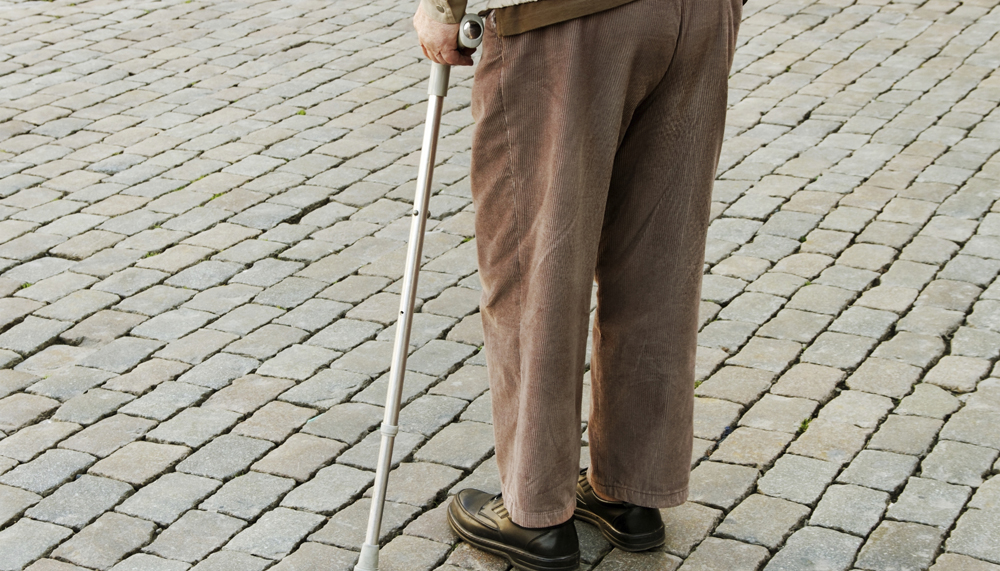A $1.5 million research trial to prevent falls hopes to keep elders standing firm.
Amid current concerns about the impact of falls on the ongoing health of older people, research is being conducted via a patient-centred program to prevents falls, subsequently reducing injury and hospitalisation.
RESPOND, the innovative post-emergency department discharge program designed to reduce secondary falls in older people, will bring together health departments, service providers, researchers and clinicians from Victoria, WA and NSW.
To extend current research and practice on falls prevention, patient-centred education will be incorporated with behaviour change strategies that are proven to be effective in the secondary prevention of cardiovascular events.
Associate professor Glenn Arendts from the University of Western Australia’s School of Primary, Aboriginal and Rural Health Care said the trial’s strategies include ensuring adequate surveillance of ED patients and participation of as many eligible patients as possible.
“This is a trial testing secondary falls prevention. To be eligible, the patient must have already had at least one fall requiring ED attendance and recruitment will occur in the participating hospitals,” Arendts said.
He said falls are the leading cause of ED attendance in older people, and healthcare costs associated with falls are double those associated with motor vehicle trauma.
Very few people that attend ED with a fall have access to appropriate interventions to prevent further falls. In addition, some programs may not meet the requirements and preferences of the patients so participation is poor.
Thus, falls and ED attendances with often serious injury are common. Currently, 50 per cent of older people who come to ED with a fall will return within six months.
“We believe that many if not most secondary falls are preventable, providing two fundamental principles are applied,” said Arendts.
“Firstly, falls risk factors must be identified and addressed using best available evidence. Secondly, it is the patient, supported by falls specialists, that drives risk factor modification through informed choice and targeted goal setting tailored to their circumstances and preferences,” he said.
Dr Anna Barker of Monash University said the research aims to reduce ED presentations and admissions. “The increasing burden on hospitals as a result of the persistent rise in emergency service demand by older patients is unsustainable,” said Barker.
ED demand in Australia has increased 32 per cent beyond that expected by population changes over the last decade, she said.
“Our prior studies show the fastest demand growth is in older people,” she said. “It provides a unique opportunity to strengthen research and policy collaborations. It will build both research and clinical capacity, and targets issues at the forefront of the reform agenda.”
She said the practical, rigorous design of the plan will ensure translation of sustainable research outcomes for maximal impact.
RESPOND’s partner institutions and organisations across Victoria and Western Australia will be coordinated and led by the School of Public Health and Preventive Medicine at Monash University.
Patient recruitment at the Alfred Hospital in Victoria and Royal Perth Hospital in Western Australia will start later this year, she said.
The National Health & Medical Research Council (NHMRC), Australia’s peak body for supporting health and medical research, funded this Partnership Project on preventing secondary falls.
“Partnership Projects like the one led by Monash University’s Dr Anna Barker are an important part of NHMRC’s action plan to accelerate research translation so that healthcare and the prevention of illness is based on evidence and achieves tangible health benefits for Australians,” said a spokesperson for NHMRC.
Funding under the scheme supports researchers to work with those who deliver health services to investigate and address specific ‘on the ground’ problems.
“Dr Barker’s RESPOND project aims to prevent patient falls and reduce the strain on the health system. Older patients who present to emergency departments after falls often re-present within six months again because of falls. This project will help these patients access health services that are known to prevent falls,” said the spokesperson.
Patient falls could drop by facilitating patient access to health services such as vision and medication assessments and exercise programs, which in turn will help reduce demand on emergency departments.
As part of the Partnerships for Better Health initiative, $7.9 million in Australian government funding has been allocated for 11 NHMRC’s Partnerships for Better Health Projects.
These partnerships are a joint initiative between NHMRC and partners including Commonwealth and state agencies, hospitals, medical research institutes and patient advocacy groups.
Partners are contributing an additional $3.46 million in funding plus $6.25 million in-kind support. A key benefit of this work is encouraging alliances between partners who deliver health care services, partners who make decisions about health practice, and researchers who can offer tailored, evidence-based solutions.
“As highlighted in the NHMRC Strategic Plan 2013–2015, research translation is a vital part of health and medical research. The ‘on the ground’ partners will take up the knowledge and solutions that are uncovered through these collaborations to improve health policy and practice, and reap improved health outcomes for our community,” he said.
Do you have an idea for a story?Email [email protected]
 Aged Care Insite Australia's number one aged care news source
Aged Care Insite Australia's number one aged care news source

